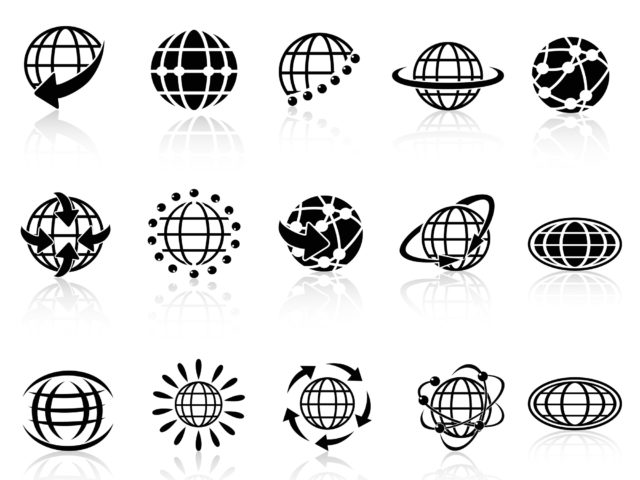
here's something cosmic about the intersection of global climate change and the rise of artificial intelligence. Just as humankind teeters on the precipice of environmental destruction, the species steps across the threshold of a tool of unimaginable power that may pull us back from the brink.
It's clear that something new and revolutionary is needed to break the logjam. While dire climate change forecasts have persisted for decades, warning that a 1.5� C climate change warming increase was the absolute limit to avoid catastrophic consequences, that level was easily breached in 2023.
The effects of climate change in the next decade may be horrific. Artificial intelligence offers new tools to see and avoid the worst disasters.
With business-as-usual happening in industry and society, something has to happen to save humanity from itself. That something may be the machines.
AI Climate Change Predictions Take on a Tough Part of the Climate Problem
Mitigating climate change first requires understanding climate change. And that's been a tough challenge for climate scientists ever since the field first emerged.
Global warming predictions are notoriously difficult to make with any accuracy.
Predictions on climate change have been a risky business for scientists. The huge and interconnected nature of the biosphere is a complex system that is tough to model. Enormous numbers of data points go into those models. That, in turn, makes accurate predictions a problem. Even the most minor missed variable risks hugely inaccurate outcomes.
Further, for most of the history of climate science, the computational machinery available hasn't been up to the challenge of crunching so many parameters. Even as recently as 2020, a single run calculating only two years of global climate modeling on a supercomputer at a 5-kilometer resolution took four months to complete.
When trying to look at details on the scale of hundreds of years, you can see the difficulty. And for the greatest accuracy, many models must be run, compared, and integrated.
Historically, the accuracy of these efforts hasn't been great… some have predicted doom by 2020, and others have utterly missed dangerous spikes in temperature that have occurred.
How AI Can Power Climate Change Predictions
 One of the first and the earliest ways that AI is contributing to a better climate change future is through incredible predictive powers that can completely change the modeling game.
One of the first and the earliest ways that AI is contributing to a better climate change future is through incredible predictive powers that can completely change the modeling game.
The reason climate models are so hard to calculate is all the detail. So many factors have an impact that all of them have to be accounted for and compared to one another.
Machine learning has an answer to that complexity. Powerful and self-teaching algorithms can parse the vast oceans of data quickly. They have the ability to tease out trends and connections that humans might not even think to look for. And they can improve over time, using additional data and feedback to hone their predictions further.
Using AI for Climate Change Modeling Offers a More Fine-Grained Look at the Issues
 Just as importantly, climate change AI models can help identify exactly what threads are the most important in those climate models. That provides actionable intelligence that leaders can use to focus solutions on the points in the system that offer the greatest leverage.
Just as importantly, climate change AI models can help identify exactly what threads are the most important in those climate models. That provides actionable intelligence that leaders can use to focus solutions on the points in the system that offer the greatest leverage.
For example, new AI modeling has increased the accuracy of forecasts of the El Niño Southern Oscillation in the Pacific Ocean up to 18 months out. That offers planners and officials valuable time to prepare for an event that has widespread impacts across two continents.
Better climate intelligence can tell us how to mitigate climate change.
Similar climate change forecast improvements around the world can give individuals and governments time to prepare for the worst impacts of global warming.
Climate Change Projections From Artificial Intelligence May Be Faster and More Accurate
 Current climate projections are largely based on models developed by humans. Of course, AI is also built by humans. But once the training happens, a different kind of intelligence and creativity comes into play. AI has been valuable for finding trends that humans don't even know to look for. It doesn't share the kind of preconceptions that human scientists bring to the table.
Current climate projections are largely based on models developed by humans. Of course, AI is also built by humans. But once the training happens, a different kind of intelligence and creativity comes into play. AI has been valuable for finding trends that humans don't even know to look for. It doesn't share the kind of preconceptions that human scientists bring to the table.
So AI climate projections bring a new perspective to climate modeling. They identify new areas for concern, or highlight impacts to regions that hadn't previously been a concern. They may also be more accurate and precise than traditional models.
In 2023, AI meteorological models were found to be able to outperform conventional weather forecast models. There's no reason to think they won't be able to accomplish the same feat on a longer climatological scale.
The Complicated Relationship of Technology and Climate Change
 To many in the environmental science community, the potential of AI climate change solutions is going to seem like a contradiction. If you look at the historic relationship of technology in climate change, the curve of technological advancement and global warming fit together like a glove. It has been the industrial demands of tech that have created the emissions that have driven global warming.
To many in the environmental science community, the potential of AI climate change solutions is going to seem like a contradiction. If you look at the historic relationship of technology in climate change, the curve of technological advancement and global warming fit together like a glove. It has been the industrial demands of tech that have created the emissions that have driven global warming.
Even using AI on climate change comes with an associated carbon cost. The AI environmental impact is subject of a seminal 2021 research paper “On the Dangers of Stochastic Parrots” that details the extensive carbon costs associated with training large language models (LLMs) like ChatGPT.
Yet at the same time as the big arc of technological development has fueled carbon emissions, certain new technologies have also proven critical to combating climate change.
- Carbon capture and scrubbing
- More efficient and hybrid engines
- Solar and wind generation
Now, artificial intelligence may be about to take its place at the top of that list.
There's a whole array of different solutions AI may bring to the table to help monitors, predict, and ultimately help mitigate the effects of climate change.
How AI Can Help Climate Change Solutions Through Monitoring
 One of the first places AI is finding a home in climate model predictions is in validating them through real world observation. Satellite imagery tracking polar ice cap melt and iceberg drift is enhanced by improvements in computer vision from machine learning. Other eyes in the sky track deforestation and map the encroachment of roads into remote areas of the Amazon. They can point researchers to new factors to incorporate in models or to predictions that aren't lining up with reality.
One of the first places AI is finding a home in climate model predictions is in validating them through real world observation. Satellite imagery tracking polar ice cap melt and iceberg drift is enhanced by improvements in computer vision from machine learning. Other eyes in the sky track deforestation and map the encroachment of roads into remote areas of the Amazon. They can point researchers to new factors to incorporate in models or to predictions that aren't lining up with reality.
Other climate change technology powered by AI comes in at the ground level. In Ecuador, remote monitors scattered through the jungle listen to the sounds of wildlife around the clock. Fed to machine learning algorithms, this data is processed by AI to assess biodiversity and overall forest health. It allows scientists to predict recovery rates or observe early warning signs as the lungs of the planet began to collapse.
The combination of newer and smarter IoT (Internet of Things) devices scattered all around the planet will cast a wide net for data. Climatologists will have an easier time than ever validating their modeling against real-world climate change.
Artificial Intelligence Climate Change Impacts Will Also Come through Sustainability Boosts
 Machine learning and AI will also help address climate change by offering small-scale sustainability solutions. These will pop up in all kinds of industries and areas that contribute in some way or another to global warming.
Machine learning and AI will also help address climate change by offering small-scale sustainability solutions. These will pop up in all kinds of industries and areas that contribute in some way or another to global warming.
For example, machine learning algorithms can be used to build more efficient control systems in generating plants that still use fossil fuels. Every point of improvement in efficiency means fewer emissions generated that contribute to climate change in the future.
The same is true of AI-based systems that calculate more efficient routing for ships and aircraft. Any fuel savings is seen as a boon for corporate bottom lines, but it's also a reduction in pollutants and greenhouse gases.
Finally, AI may transform entire sectors in ways that are a net positive for sustainability. Self-driving vehicles, for instance, won't happen without AI. But when they do, they may usher in new driving patterns that use roads and highways more efficiently. Getting people where they go more quickly means fewer hours burning fossil fuels.
How AI Can Help Mitigate Climate Change
 Accurate modeling helps identify areas where solutions are needed. But AI also has the potential to come up with the solutions to some tough climate problems.
Accurate modeling helps identify areas where solutions are needed. But AI also has the potential to come up with the solutions to some tough climate problems.
One promising avenue for real mitigation efforts may come through materials science. Already, AI is being used to comb through potential chemical bonds and interactions to identify particular substances with certain properties that can be useful in construction or manufacturing.
This could be useful, for example, in coming up with materials as hard and durable as concrete, but with a much lower carbon impact.
It may also come up with miracle materials that can more actively address atmospheric carbonization, such as substances that can absorb CO2 in direct air capture solutions. Sucking greenhouse gases right out of the atmosphere is inefficient, but may be necessary. Better solutions to make it happen could accelerate decarbonization efforts.
Examples of Artificial Intelligence and Climate Change Solutions
The real magic of using AI for climate change solutions may be in combining all of the ways it has an impact on the crisis. New models may suggest new data points to monitor; AI monitoring will continue to hone the information fed to the models.
The highlights from machine learning modeling efforts can flag areas to focus on using AI for other mitigation.
The grand vision of all those systems coming together is really still mostly imaginary. But there are real day-to-day applications of AI in mitigating climate change that are already in play.
Tracking methane emissions through satellite imagery is already being used by the UN to verify corporate reporting. While satellites have been collecting imagery from all over the world for decades, there was no easy way to use those pictures to find methane leaks. But AI can watch tirelessly and flag likely new leaks instantly through machine learning processes.
Another way that AI can leverage satellite scanning is through forest fire detection. In addition to protecting structures and lives, jumping on fires early helping to reduce the reduction of tens of thousands of tons of stored carbon into gas as trees burn.
It's not just sat scanning that uses AI to find fires, though; a German company has begun to deploy AI sensors in vulnerable forests to detect fires by sampling the atmosphere for combustion byproducts. Sending up an alert without even having to wait for a satellite pass and data download catches fires even earlier.
Climate Change AI Startups Are Probing New Solutions in Climate Mitigation
 Climate change is a global risk demanding global action. So most of the big players are governments and NGOs (Non-Governmental Organizations) that operate at scale.
Climate change is a global risk demanding global action. So most of the big players are governments and NGOs (Non-Governmental Organizations) that operate at scale.
But the engine of capitalism is always turning, even when it comes to existential risks. So there are many bright engineers and scientists starting up new companies to bring AI to bear on the climate problem.
Most tech companies fighting climate change are using AI in the intelligence space.
These companies don't always have the funding of larger players, but they are nimble and run with passion. That can give them an edge in taking a fresh look at climate solutions.
One example is One Concern, a company that is hard at work building a digital twin of the natural and built environment to offer precise and actionable climate risk modeling. High quality predictions are produced for financial services companies, insurers, and major corporations seeking to protect their investments.
Other startups aren't necessarily focused directly on climate change but offer AI-based services that can still mitigate warming. BrainBox AI uses machine learning to run building HVAC systems more efficiently, promising to reduce the overall carbon footprint by 20 to 40 percent.
It's not just startups, either; Google actually pioneered such learning HVAC systems using its internal DeepMind project to help run data centers more efficiently.
Generating Innovative Climate Change Solutions With AI
Some of the most important contributions of technology to combat climate change through AI haven't even been invented yet.
That's because AI is really in its infancy today. In the form of data science, it has offered a fairly mature and well-understood tool for data analysis for years. But as a generative tool, one that comes up with genuinely new techniques or ideas, it's just getting started.
As models improve and more data is applied, you can expect climate change technology developed with AI to surge ahead in offering innovative solutions to humanity's biggest problem.
AI and Climate Change Will Continue to Evolve Together in the Future
 Can AI fix climate change?
Can AI fix climate change?
Honestly only in the deepest pipe dreams of the greatest cheerleaders for artificial intelligence can you find any chance at all that AI will actually solve the climate change. In this scenario, humankind invents a benevolent artificial super intelligence that magically creates technology and social engineering techniques to overcome and reverse our worst excesses and leads the planet to a cooler future.
That's a solution that rests on a lot of shaky assumptions. But it doesn't mean that using AI for climate change doesn't have a lot of potential.
Ultimately, however, climate change is a social problem rather than a technical one. The fix for global warming has been well understood for decades. The obstacles have been human ones, not machines that aren't yet smart enough. In a world where people are actively blocking green energy projects even as the nation faces a power crunch overall, AI alone will never be enough to fix the problem.
But it may help humans find better ways to do it themselves.
Education Is the Way to Learn How to Mitigate Climate Change With AI
Artificial intelligence and climate change science are both enormously complex fields of study. They are also both strongly interdisciplinary. Many different kinds of science and learning go into them.
It can be relatively easy for climatologists to learn about AI and machine learning without straying from their educational path.
A degree in Environmental Science, particularly with concentrations in Environmental Engineering or Environmental Technology, or a Master of Environmental Data Science are both roads to making use of AI in climatology. There are also specialized degrees coming the other direction, such as the Master of Science in Intelligent Systems Engineering Environmental Engineering Track. And many specialized applications of AI have their own degrees, like a Master of Science in Computer Vision.
For professional environmental scientists already active in the field, knowledge of AI can come through a Graduate Certificate in Artificial Intelligence. Building on the strong math and science skills they have already demonstrated; these programs dive directly into concepts like deep learning and neural networks.
Although the most technical parts of the tools used for AI in environmental science will be built by AI engineers, environmental scientists will be a critical part of the teams that put these game-changing systems together.
- The Role of Artificial Intelligence in Environmental Sustainability - April 11, 2024
- The Role of AI in Tackling Climate Change - April 9, 2024
- VW Partners With Conservation Fund and 3Degrees to Manage and Restore Redwoods - June 19, 2015
Related Articles
Featured Article

Geoscience: Unlocking the Planet’s Nature





